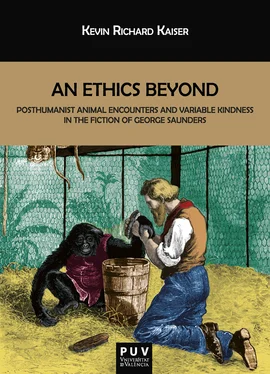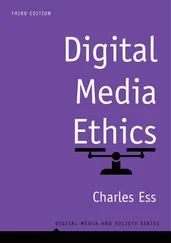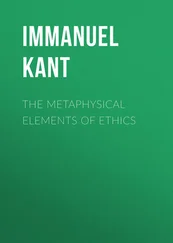Posthumanism and its closest kindred terms (posthuman, posthumanist) along with related terms (transhumanism, antihumanism) have remained, across the past four decades, woolly enough that what is meant by them generally depends on the utterer. Furthermore, posthumanism as a term is not without its problems, especially because it remains leashed to what it proposes to deconstruct. Regardless of my qualms with the term, I bear it in this study as I join the posthumanist discourse begun by critics of posthumanism. More than four decades have passed, but Hassan’s question stands. This chapter will offer an overview and criticism of posthumanism as it is understood by various critics and how it relates to nonhuman animals, beginning with a survey of some of the main definitions of posthumanism as a philosophical and critical movement before addressing how deconstruction, especially that found in Derrida’s later essays, relates to posthumanism and what are called “the discourse of species” and “the animal question,” before finally addressing how this pertains to notions of posthumanist ethics, including those suggested by difference theorists, like Derrida, and indistinction theorists. Although this chapter focuses primarily on posthumanist theory, I will provide intermittent acknowledgments as to how it applies to Saunders’s fiction.
One of the critics who has described the differences in terminology with which posthumanism is associated or alternated is Francesca Ferrando. In her incisive comparative essay, “Posthumanism, Transhumanism, Antihumanism, Metahumanism, and New Materialisms: Differences and Relations,” she notes that the term “posthuman” has now
become a key term to cope with an urgency for the integral redefinition of the notion of the human, following the onto-epistemological as well as scientific and bio-technological developments of the twentieth and twenty-first centuries. The philosophical landscape [...] includes several movements and schools of thought. The label “posthuman” is often evoked in a generic and all-inclusive way, to indicate any of these perspectives, creating methodological and theoretical confusion between experts and non-experts alike. (2013, 26)
The term, in fact, need not be so ambiguous. Ferrando describes it as an “umbrella term” under which are included various offshoots of posthumanism and transhumanism (as well as new materialisms, antihumanism, posthumanities, and metahumanities) (26). What often appears under the guise of posthumanism is more properly labeled transhumanism, which, as its name suggests, is concerned with transcending the human rather than deconstructing humanism.
Ferrando takes care to identify the key differences between posthumanism, in its more proper senses, and transhumanism. She contends that by taking for granted Enlightenment humanist formulations of those qualities considered the privileged domain of the human, transhumanism “runs the risk of techno-reductionism: technology becomes a hierarchical project, based on rational thought, driven towards progression” (Ferrando 28). Transhumanism, to put it telegraphically, intensifies humanism, whereas posthumanism, in re-evaluating the human subject and de-emphasizing its centrality, de-anthropocentrizes those fields associated with humanism, thus opening and freeing humanism from its own constraints. To call the transhuman and posthuman interchangeable denies the de-anthropocentrism at work in posthumanism.
While both projects do preserve an interest in technology, “posthumanism, in its radical onto-existential re-signification of the notion of the human, may offer a more comprehensive approach” than transhumanism, which Ferrando characterizes as “ultra-humanism” (27). In other words, because posthumanism is post-anthropocentric, it may serve as a better measure of understanding the posthuman condition than transhumanism, whether technological or otherwise. Posthumanism understands the role of technology as interdependence between the human and technological worlds, not solely as anthropological and paleontological issues but as an ontological matter, leading Ferrando to emphasize Michel Foucault’s notion of technologies of the self, which “dismantle the separation self/others through a relational ontology, playing a substantial role in the process of existential revealing, and opening the debate to posthuman ethics and applied philosophy. Posthumanism is a praxis” (29). The human is no longer the sole subject; the Other must also be considered as subject, thereby challenging us to conceive of an ethics that does not start and end with any conception of the human.
Such a challenge is both destabilizing and, according to Stefan Herbrechter, “rapturous.” In Posthumanism: A Critical Analysis (2013), he provides a preliminary definition of the term. For him, posthumanism is “the cultural malaise or euphoria that is caused by the feeling once you start taking the idea of ‘postanthropocentrism’ seriously” (Herbrechter 3). By this definition, posthumanism entails a condition, a cultural feeling of profound discomfort and uneasiness or rapture. More precisely, posthumanism is both. Thinking beyond anthropocentrism, when it has existed both implicitly and explicitly as the de facto way of thinking in many fields of study, is culturally and philosophically unsettling. As we no longer accept the human as the core of our studies, we face, and are faced by, a host of subjects. The euphoria is perhaps one with this unheimlich facing, in this being faced, by another subject, the Other. We have never quite been able to define what is, precisely, “the human” through the formulations of humanism, neither by addressing “what is the human” nor by addressing, in a more rigorous Heideggerian vein, “how is the human,” in the sense (of the possibility) of its being, which seem the wrong questions to be asking.
We may now ask how beings are interdependent and what this means, but perhaps the most obvious query concerns how to develop posthuman theory without returning to humanism. Even more importantly, we must inquire how posthuman theory can be not only radicalized but actualized. What Herbrechter and his peers are asking is how posthumanism can avoid regressing into an alternative iteration of humanism and whether it can become an active, evolving praxis. Subjectivity is an important matter in this context. Equally important is how these questions, if indeed they are the questions to ask, are formulated. The risk resides in presupposing that what is paramount in posthumanism is, for example, how to restore a Western humanist notion of universalism in terms of subjectivity or how to extend rights to nonhumans based on qualities akin to those found in humans (as opposed to considering how humans are alike or different from nonhuman or human others). This is not to say the human is not important or that every humanist idea must be rejected; the point is that if the human is important to us, what we call the Other should be equally important. How we ask questions is as important as what we ask if we are to evade human exceptionalism.
Like Herbrechter, the cultural critic Rosi Braidotti also underscores the potential ambivalence of the posthuman condition in her monograph, The Posthuman (2013). Braidotti cites sociologist and philosopher Jürgen Habermas, who concedes that the posthuman condition “provokes elation but also anxiety” (2). She also understands the “posthuman” as that which describes our current condition, that is, one which launches “a qualitative shift in our thinking about what exactly is the basic unit of common reference for our species, our polity and our relationship to the other inhabitants of this planet” (Braidotti 2). In other words, the posthuman condition has required the qualities of our thoughts (or feelings) to change (or be recognized), which has resulted in a shift in the humanist schemas and attitudes that historically have privileged and prioritized the human.
Читать дальше












